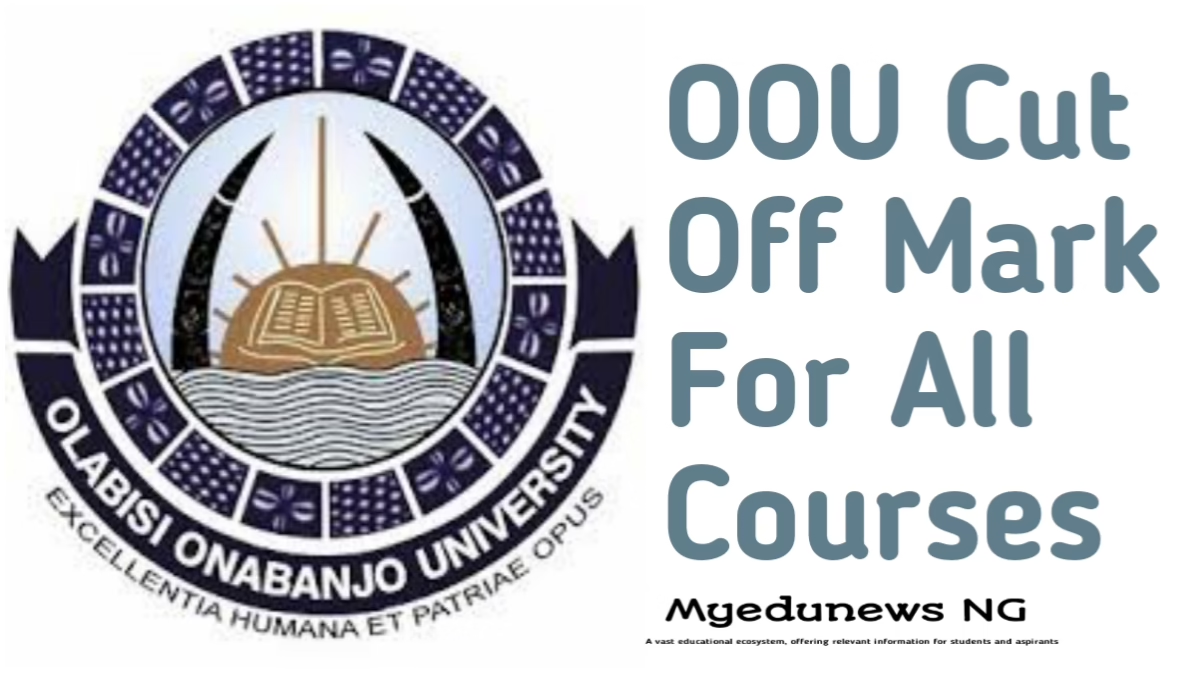Are you curious to know the OOU Cut Off Mark for all courses for the 2025/2026 academic year? Be rest assured, we will help you with that.
As a prospective student of Olabisi Onabanjo University (OOU), one of the first things you should get familiar with is the OOU Cut Off Mark for all courses for the 2025/2026 academic session. Understanding this will give you a clear idea of the level of preparation needed to secure admission into your preferred course at OOU.
In this article, we’ll break down everything you need to know about the OOU Cut Off Mark for various courses, along with the admission eligibility requirements.
Olabisi Onabanjo University, OOU Cut Off
Generally, a cut-off mark is the minimum score you must attain in the Unified Tertiary Matriculation Examination (UTME) to be considered eligible for admission into any tertiary institution, such as a university, polytechnic, or college of education.
This cut off mark can vary between institutions and also across different courses, depending on the level of competition. For instance, the cut-off mark for universities is typically different from that of polytechnics, just as the cut off for Medicine and Surgery (MBBS) is usually higher than that of Microbiology.
OOU Cut Off Mark For JAMB
This is the officially approved general cut off mark set by the management of Olabisi Onabanjo University (OOU).
It represents the minimum score candidates must obtain to be eligible for admission into the university.
In essence, any candidate who scores below this specified mark will not be considered for admission into OOU.
What Is OOU Cut Off Mark For All Department 2025/2026?
The OOU departmental Cut Off Mark is the minimum score a candidate must achieve in the post UTME screening to be considered for admission into a specific course. This cut off mark varies based on the course, faculty, and department. Generally, the more competitive a course is, the higher its departmental cut-off mark tends to be.
- Accounting – 160
- Agricultural Engineering – 160
- Agriculture – 160
- Anatomy – 160
- Applied Zoology – 160
- Banking and Finance – 160
- Biochemistry – 160
- Business Administration – 160
- Business Education – 160
- Chemical Sciences – 160
- Chemistry – 160
- Christian Religious Studies – 160
- Civil Engineering – 160
- Civil Law – 160
- Computer Engineering – 160
- Computer Science – 160
- Crop Production – 160
- Economics – 160
- Education (Specializations) – 160
- Electrical/Electronics Engineering – 160
- English Language – 160
- Fine and Applied Arts – 160
- Fisheries – 160
- Forestry and Wildlife – 160
- Forestry, Wildlife and Fisheries – 160
- French – 160
- Geography and Regional Planning – 160
- Geology – 160
- Guidance and Counselling – 160
- Health Education – 160
- History and Diplomatic Studies – 160
- Home and Hotel Management – 160
- Home Economics – 160
- Industrial and Labour Relations – 160
- Industrial Chemistry – 160
- Islamic Studies – 160
- Linguistics – 160
- Mass Communication – 160
- Mathematics – 160
- Mechanical Engineering – 160
- Medicine and Surgery – 160
- Microbiology – 160
- Music – 160
- Nursing/Nursing Science – 160
- Nursery and Primary Education – 160
- Performing Arts – 160
- Pharmacology – 160
- Pharmacy – 160
- Philosophy – 160
- Physics – 160
- Plant Science – 160
- Political Science – 160
- Psychology – 160
- Public Administration – 160
- Secretarial Administration – 160
- Sociology – 160
- Sport Science – 160
- Statistics – 160
- Teacher Education Science – 160
- Transport Planning and Management – 160
- Urban and Regional Planning – 160
- Yoruba – 160
Eligibility Criteria For Olabisi Onabanjo University Post UTME:
To be eligible for the Post UTME screening exercise, candidates must meet the following requirements:
- Candidates must choose Olabisi Onabanjo University as their first choice institution.
- Candidates must score a minimum of 160 in the Unified Tertiary Matriculation Examination (UTME).
- Candidates must be willing to change or have changed their institution to Olabisi Onabanjo University as their first choice before the screening date.
- Candidates must upload their O’Level results on the JAMB CAPS platform.
OOU Direct Entry Requirements
- Candidates must possess A’Level, OND, HND, NCE, or JUPEB results, certificates, or first degrees.
- Candidates must apply through JAMB.
- Candidates must hold a diploma certificate from Olabisi Onabanjo University or another university with minimum Upper Credits.
How To Calculate OOU Aggregate Score?
To calculate your aggregate OOU Cut Off Mark for Olabisi Onabanjo University:
- Divide your UTME score by 8.
- Divide your Post-UTME score by 2.
- Add the results from steps 1 and 2 together.
- The final sum is your aggregate score.
Frequently Asked Questions (FAQ)
Does OOU Do Post UTME Or Screening?
Olabisi Onabanjo University conducts Post UTME screening to ascertain the academic qualifications of candidates applying to study in OOU
What Is OOU Post UTME Cut Off Mark?
The cutoff mark to qualify for the Post UTME screening at Olabisi Onabanjo University (OOU) is 160. This means candidates must score 160 or above in the Unified Tertiary Matriculation Examination (UTME) to be eligible to participate in the Post UTME exercise.
Is Olabisi Onabanjo University Public Or Private?
Olabisi Onabanjo University (OOU) is a state-owned institution situated in Ogun State, Nigeria.
The university is funded the government of Ogun state.
How To Calculate OOU Aggregate Score?
To Calculate your OOU aggregate score:
- Divide your UTME score by 8
- Divide your post UTME score by 2
- Add the result of step 1 and step 2
Conclusion
Understanding the OOU Cut Off Mark helps you prepare better for the admission process and make strategic academic decisions. We hope this guide assists you in your journey to securing admission at Olabisi Onabanjo University (OOU)!
For further inquiries or assistance on the OOU Cut Off Mark, feel free to reach out — we’re here to help
And for more information on OOU Cut Off Mark, visit the school website at: https://oouagoiwoye.edu.ng







